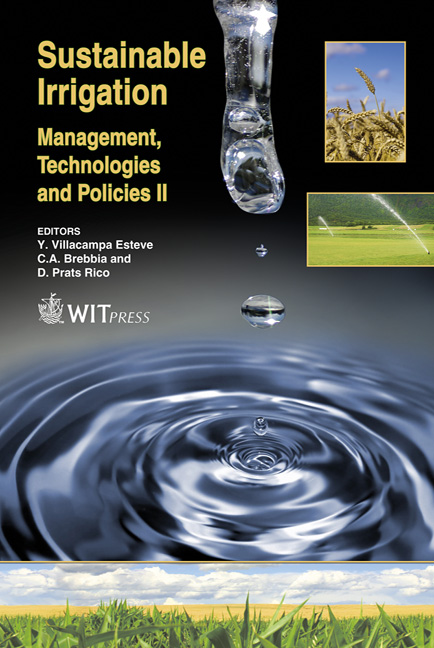Study To Improve The Effective Use Of Water In The Stompdrift-Kamanassie Water Scheme In The Oudtshoorn Area In The Western Cape Province Of South Africa
Price
Free (open access)
Transaction
Volume
112
Pages
9
Page Range
313 - 321
Published
2008
Size
659 kb
Paper DOI
10.2495/SI080311
Copyright
WIT Press
Author(s)
A. S. Roux
Abstract
The Stompdrift and Kamanassie Irrigation Scheme provides water for 13 513 ha in the Klein Karoo region of the Western Cape Province of South Africa. Water losses are high in the unlined earth canals, which cover more than 50% of the total length. The two dams can on average supply 22 million cubic meters per annum (Mm3/a) of the total allocation of 28 Mm3/a. The fully allocated quantities of water are supplied erratically, with only a fraction of the allocations supplied in some years, with the result that about 40% of the land is irrigated in most years. Agriculture is the backbone of the economy of the whole region and the socio-economic circumstances of the population, especially the historically disadvantaged individuals, who rely heavily on agriculture. It is thus essential that the available water should be optimally utilised for the benefit of all. Several studies in the past could not find an economical solution to the problem and a new study was commissioned to investigate water usage and more beneficial uses. The economic feasibility of developing sources of additional water was reviewed in terms of the current economic conditions. The improved efficiency of water use, the possible augmentation of water resources, the improved management of the water scheme and the possible effects it can have on poverty alleviation in the area, are discussed. Keywords: water use efficiency, best management practices, irrigation, plant water requirements, water conservation, agriculture.
Keywords
water use efficiency, best management practices, irrigation, plant water requirements, water conservation, agriculture.





